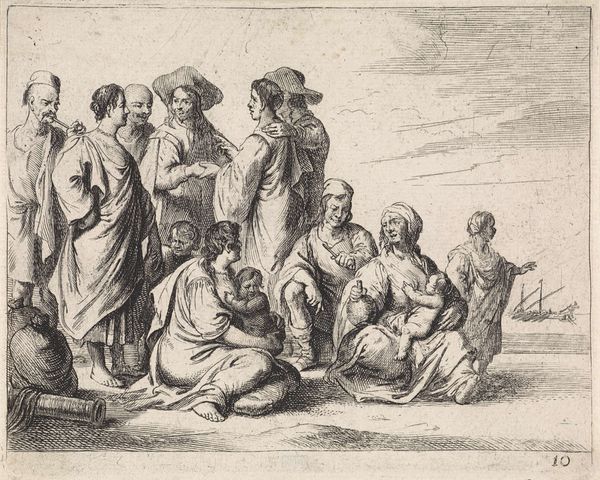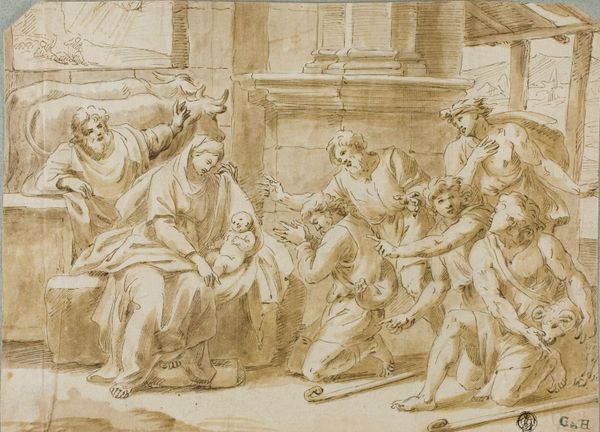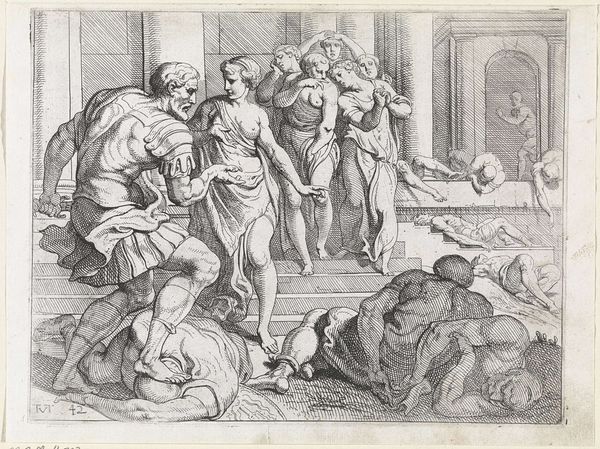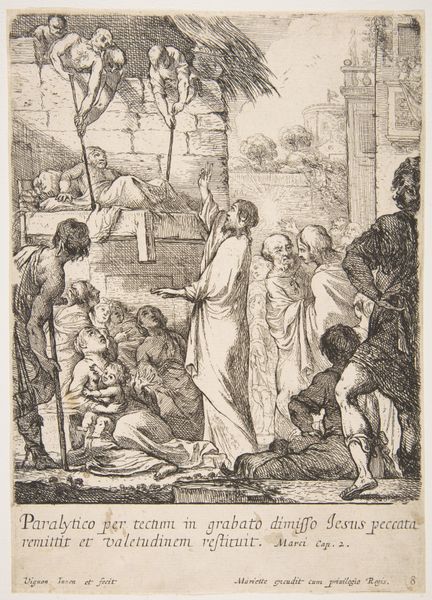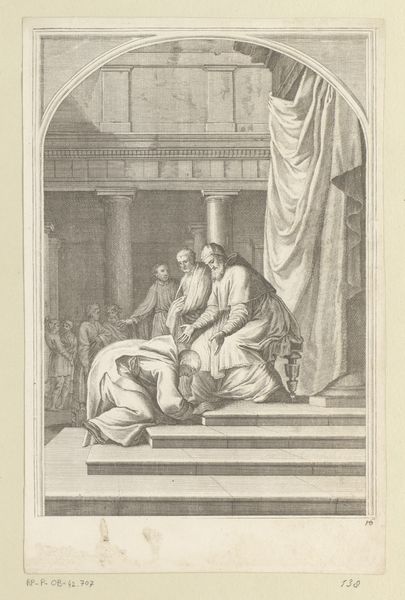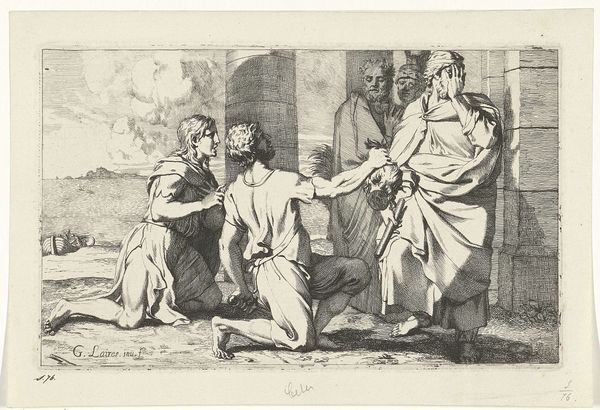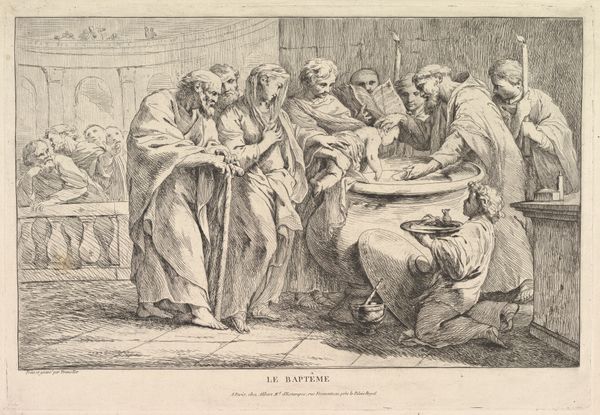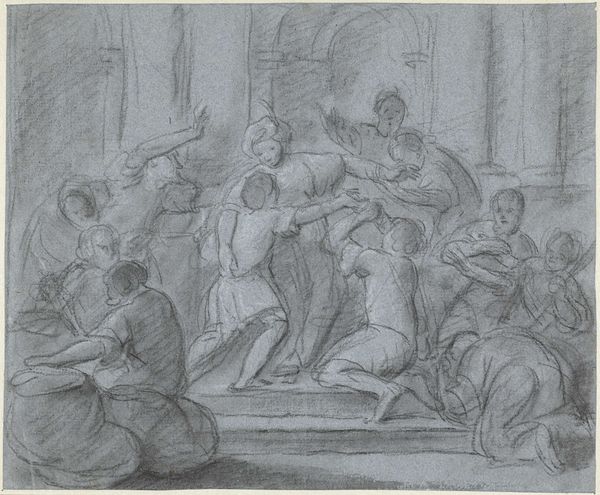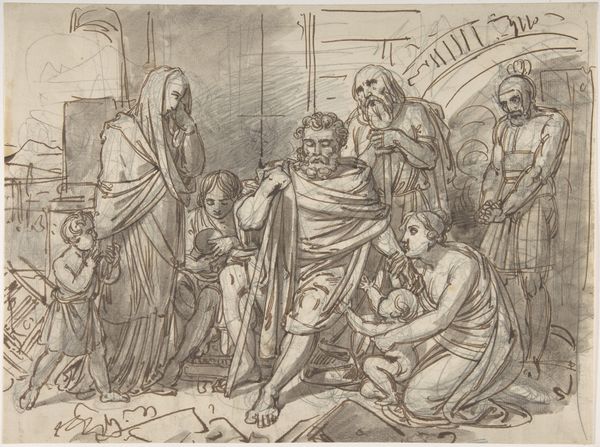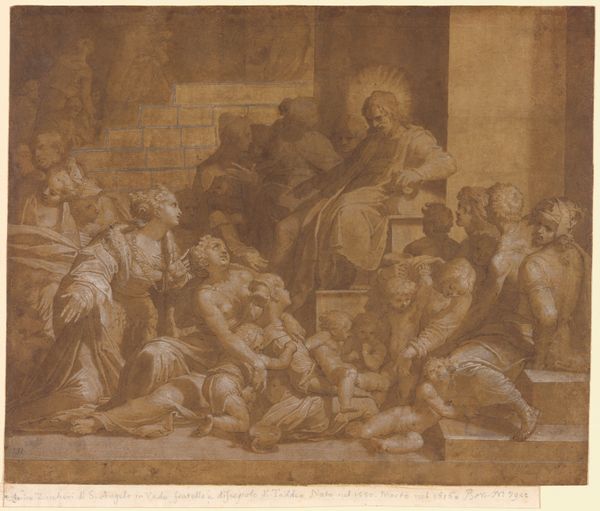
Dimensions: 6 1/2 x 8 15/16 in. (16.5 x 22.7 cm.)
Copyright: Public Domain
Editor: So, this is "The Despair of Hecuba" by Pierre Peyron, made between 1779 and 1789. It's a charcoal and pencil drawing on paper, and the scene is really intense. I'm struck by the linear composition, how the figures are arranged to create a sense of depth, and also by its overwhelming aura of sorrow. How do you interpret this work formally? Curator: The image’s power arises from Peyron's adept manipulation of line and tone. Note how the architectonic elements, though spare, establish a stage-like space, emphasizing the foreground where the tragedy unfolds. Observe how the linearity delineates each figure, their poses and gestures carefully arranged to convey distinct emotional responses to Hecuba’s despair. The artist establishes a rhythm and compositional balance while creating strong variations in shading. Do you see how the drapery, for instance, acts almost as an independent expressive element? Editor: Yes, the folds of the cloth seem to amplify the emotions of each figure, and I appreciate that. I guess I hadn't thought so much about the architectural forms creating a proscenium to the tragedy. Is that typical of Neoclassical drawing? Curator: The emphasis on structured composition is definitely present in Neoclassical art. Furthermore, notice how the lack of color shifts the focus to form and the play of light and shadow. What emotional impact does this have? Editor: It intensifies the gravity, almost like stripping away any distraction. It helps viewers to direct their attention to its shape, and shading. Thank you for walking me through that! I will surely observe visual elements a bit differently now. Curator: Indeed. A close examination of form and technique can greatly enhance our comprehension and experience of art.
Comments
No comments
Be the first to comment and join the conversation on the ultimate creative platform.
